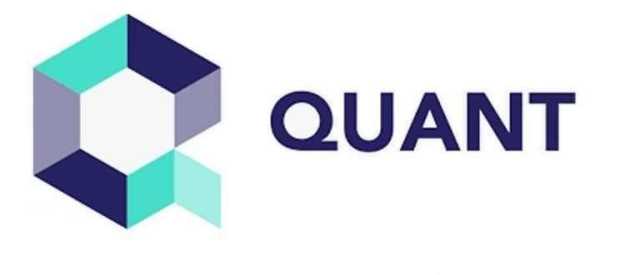
Impact on your credit may vary, as credit scores are independently determined by credit bureaus based on a number of factors including the financial decisions you make with other financial services organizations. Learn more about Consensus 2024, CoinDesk’s longest-running and most influential event that brings together all sides of crypto, blockchain and Web3. A block is a collection of data that is linked to other blocks chronologically in a virtual chain. You can think of a blockchain as a train consisting of multiple carriages connected in a line, where each carriage contains an amount of data.
Other blockchain technology use cases
- The objective is to support transferring assets from one blockchain system to another blockchain system.
- Many have argued that the good uses of crypto, like banking the unbanked world, outweigh the bad uses of cryptocurrency, especially when most illegal activity is still accomplished through untraceable cash.
- A blockchain protocol is a set of rules or guidelines that govern how the nodes within each blockchain record and share data with each other.
- Tomorrow, we may see a combination of blockchains, tokens, and artificial intelligence all incorporated into business and consumer solutions.
- There are hundreds of blockchain protocols in existence, and each offers a different function depending on the company that runs them.
But later developments gave birth to algorithms such as proof-of-stake(PoS), delegated proof-of-stake (dPoS) etc. Ethereum, one of the largest blockchain networks, adopted the PoS protocol to improve network scalability and reduce electricity consumption. PoW is a time and energy-consuming protocol in which validators continuously run data from the block header through a cryptographic hash function.
- The dark web allows users to buy and sell illegal goods without being tracked by using the Tor Browser and make illicit purchases in Bitcoin or other cryptocurrencies.
- In 2022, Unilever’s oral care brand and toothpaste, Closeup, introduced a platform that allows couples to marry in a virtual setting represented by digital avatars.
- Hyperledger is a permissioned blockchain, which means access to this network is only granted to authorized parties that must be known and authenticated.
- There are currently blockchain projects that claim tens of thousands of TPS.
- Although the idea of the Metaverse has existed for some time, current developments in technology, particularly Blockchain, have brought it closer to reality.
- This concept symbolizes permanence and transparency in marriage, which relates well to modern-day couples.
- These are important considerations for enterprise use cases of blockchain.
Conclusion on Blockchain Technology Protocols
By spreading that information across a network, rather than storing it in one central database, blockchain becomes more difficult to tamper with. Proving property ownership can be nearly impossible in war-torn countries or areas with little to no government or financial infrastructure and no Recorder’s Office. If a group of people living in such an area can leverage blockchain, then transparent and clear timelines of property ownership could be established.
Understanding Blockchain

Also, it is vulnerable to attack because only a few people are in charge of keeping the network running. If users notice any signs of malicious activity, they can vote to remove the offending delegate right away. DPoS is best used for voting-based applications that require high verification speed and throughput. A disadvantage of PoS is that an attacker can revert the victim’s transactions and bribe the miners to confirm them. These validators are chosen at random by PoS based on the amount allocated.

They are a set of guidelines that facilitate the exchange of information in a simple, efficient, and secure way. Different machines use different hardware and software but protocols help in communication irrespective of the difference. What is a Blockchain Protocol The protocols play a very important role as they help to monitor and secure a computer network. The key components of a blockchain protocol are the consensus algorithm, validation mechanism, network protocol, and data structure.
What Exactly Is a Blockchain?

Blockchain is the foundational technology that underpins the value proposition of the entire cryptocurrency/Web3 ecosystem. It’s the engine that secures Bitcoin and establishes the foundation for why smart contracts have value. If a node doesn’t follow protocol for a transaction, then it’s state will be different to every other node in the chain. As blockchain records are permanent and cannot be erased, this forever changes the node’s copy of the decentralised ledger and means it can no longer interact with the rest of the chain. The node which didn’t follow protocol is now unable to take part in the chain. In a blockchain, every transaction that takes place must be processed by every participating node.
Digital Identity
Anyone with an Internet connection can send transactions to it as well as become a validator (i.e., participate in the execution of a consensus protocol).[71][self-published source? ] Usually, such networks offer economic incentives for those who secure them and utilize some type of a proof-of-stake or proof-of-work algorithm. The game developers control the game’s economy, assets, and rules in traditional gaming. Players have little control over their in-game assets and must rely on the developers to ensure the game’s security and fairness. On the other hand, blockchain-based gaming enables a decentralized system in which players have complete control over their in-game assets. These assets are stored on a Blockchain ledger and are owned by the players, not the developers.
In this educational post, we explore what a blockchain is, how blockchains work, what benefits they can provide that aren’t present in centralized systems, and how they’re being used to reshape the role of trust in society. The fundamental value proposition of blockchains is the ability to exchange value in a trust-minimized, permissionless way that doesn’t require the intermediation of any third party. The most basic case possible to showcase this is payments or the transfer of funds from one party to another. Motivations for adopting blockchain technology (an aspect of innovation adoption) have been investigated by researchers.
These cryptographically generated codes can be thought of as a digital fingerprint. They play a role in linking blocks together, as new blocks are generated from the previous block’s hash code, thus creating a chronological sequence, as well as tamper proofing. Any manipulation to these codes outputs an entirely different string of gibberish, making it easy for participants to spot and reject misfit blocks. In terms of consensus mechanisms, Quorum’s protocol uses either the Raft mechanism or the Istanbul Byzantine Fault Tolerance.
